Kandanga Range to the Great Sandy National Park – Day 70
I was on the bike by 7:15am. I think that would be the earliest yet. And a big sleep of 10 hours too.
Raining this morning, cloud all around. Had difficulty seeing with the visor down with all the water on it but got rain inside the helmet if the visor was up. Everything is slippery as heck with the rain. Lots of clay sections of the track are like butter…thats been left out of the fridge. Took it very slowly. At least it isn’t too cold. I am warm and quite wet.
I did stop to take a photo but the conditions were not great to do so. The rain is bad enough but workable but then the lenses fog up too.
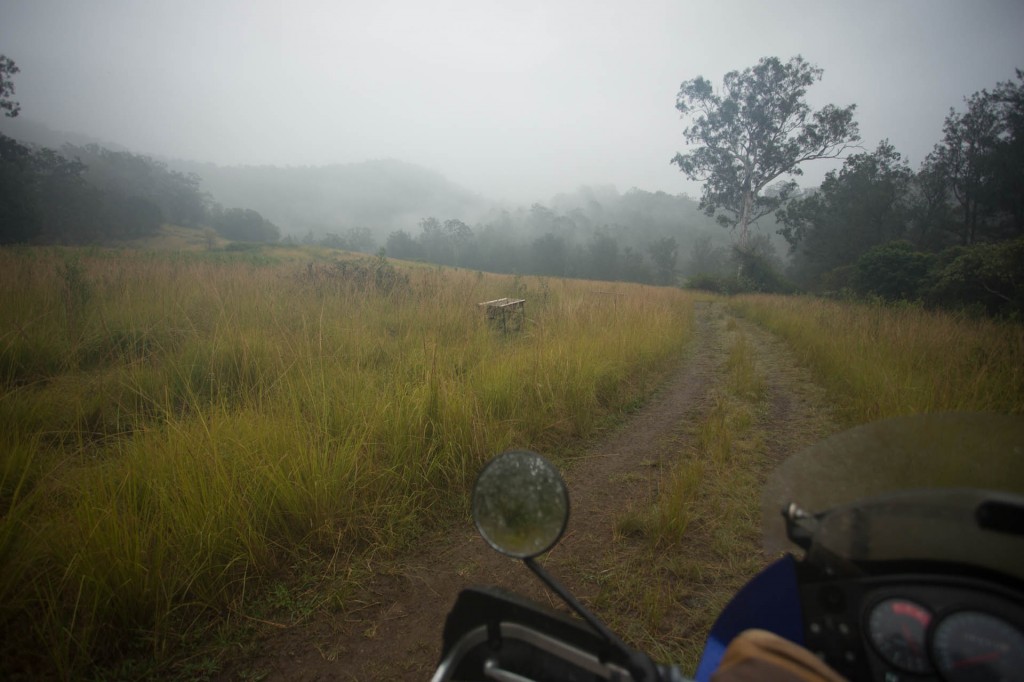
The track on the low grazing land after dropping down from the Kandanga Range. Plenty of creek crossings near by (luckily shallow). The lens promptly fogged a few seconds after this shot.
My leather gloves are wet through, my armour is saturated, my leather pants are pretty damp, my feet slosh slightly as I change gears and my helmet lining is damp from the rain coming in during the brief moments with the visor up for “technical” sections of the track. My merino thermals and woollen jumper keep me warm. Going slow also means the wind does not chill so badly. Also, the wind chills less up here than down south as a rule because it is closer to 100% humidity and hence takes less moisture from the clothing (less evaporative cooling). The down side of this is even whizzing along at 100km/h everything takes ages to dry.
I try to keep my physical excursion to a minimum too as it makes me wet from the inside (sweat). It really is a fine balance keep warm without sweating. A little bit of pushing to get out of a boggy bit of mud can saturate a t-shirt in no time with all the gear on even in the rain. Its funny taking off a water proof breathable jacket that has successfully kept the rain out for hours and yet one is still drenched on the inside. You feel kinda miffed. The gear is doing its job keeping the water out and yet you are still wet to the skin.
Despite all this moisture, my spirits are high.
Over the past few days I have passed lots of Hoop Pine (Araucaria cunninghamii) plantations.
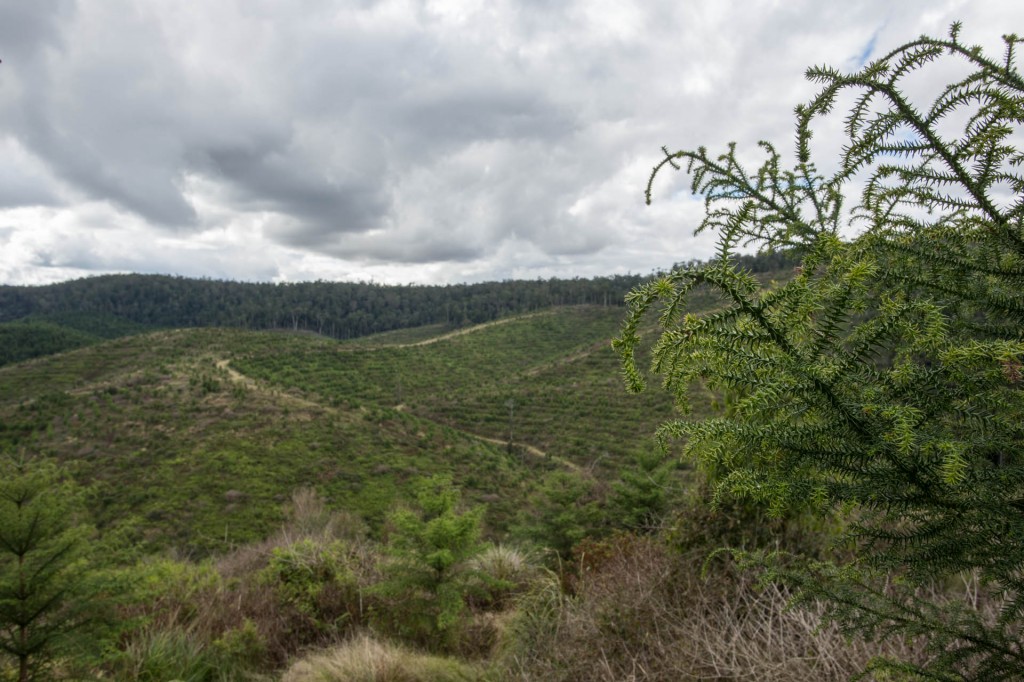
juvenile Araucaria cunninghamii (foreground right) in plantation, clear felled plantation replanted in background with state forest in far background
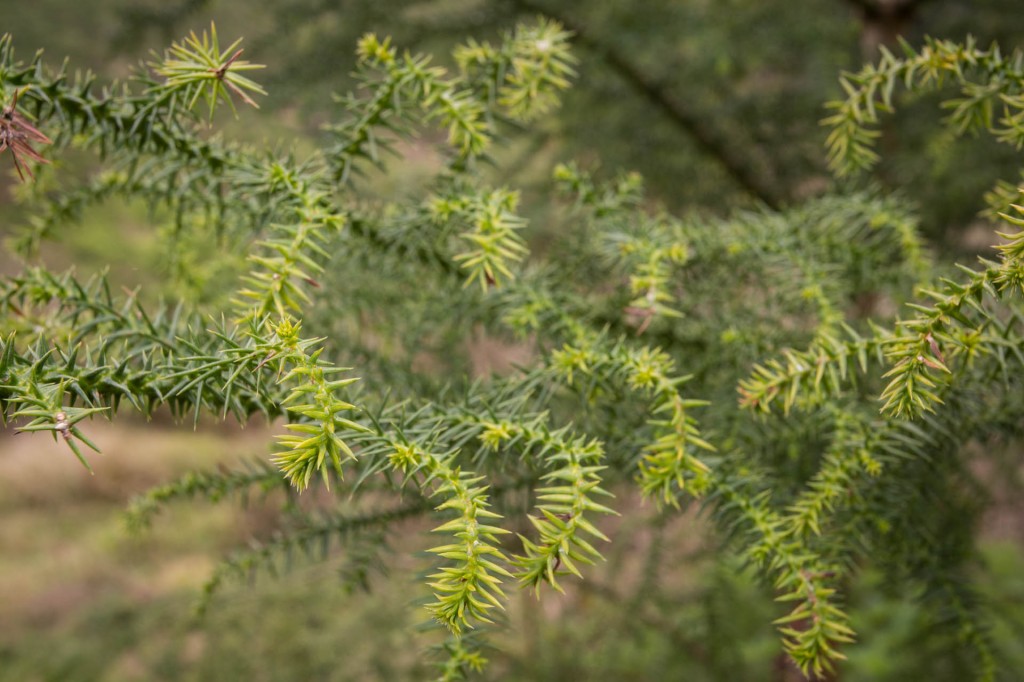
juvenile foliage detail
Ringing in my mind are the marketing lines from the companies selling ply wood like the stuff I used in the ceiling of my shed, “made from sustainably managed hoop pine plantations”.
When I saw a polycultural plantation I was surprised and intrigued. Keen to check it out, I found a house next to it and stopped. A man emerged from a small shed next the house. A vegie patch was evident on the far side of the shed. I thought to my self, here we go, this is going to be interesting.
John Alexander, originally of England, is passionate about trees and wood. He planted the forest in several stages since buying the property around 2000. Most of the plantings are about 9 years old. I have posted a gallery of my walk around the property and the subsiquent visit to the house where I met his wife, Louise Alexander.
Don’t miss out on the gallery! I haven’t posted it here because its an item on it’s own..
After a few hours at the Alexander property, I hit the road again. The rain had stopped for the most part but I was still wet.
I hadn’t done a check over for ticks after the big walk and I needed a pee so I pulled over. I went down a little side track and before I knew it I was bogged. Shit!
I had put a fresh, dry, t-shirt on before having a cup of tea at John’s to replace the one that I put on fresh and dry this morning which had become saturated before getting to John’s. I only carry two t-shirts and two shirts! So, bogged I promptly saturated the second t-shirt. I did get out but heck this black stuff is buttery. Ever worse than this mornings clay. This is the low land farming “soil”. Another thing is my rear tyre a little under 50% tread depth left too.
The full motorcycle gear seems to have kept the ticks off well so far.
Back on the road, and its raining again.
On my way into the township of Kandanga I spotted a stack of citrus, apparently unwanted, on an old orchard. I stopped at the house and a man came to the door of the Old Queenslander. He was totally happy for me to pick some fruit and even gave me a bag and told me where a rake was (took me a sec to work out why I wanted a rake).
After eating some, picking enough for me (lots) and some for him, I went back to thank him. Got chatting and told him about what I am up to. He invited me in for a coffee and we talked bikes. If I recall, his name is Mark Russell. I had a great time looking over his pictures of the many bike he has owned including some really cool bikes he custom made! He looks a bit older than I think he is because he is battling cancer. I have to say though, he is a real survivor! What a guy. Thanks for your stories Mark, I still have the image of the old yellow bike with your name written on the side in my mind. I’m wishing I took a photograph of…the photograph.
A late lunch in the park at Pomona.
I got a message from Raman saying he had left for Fraser Island for a few days and I remembered Su had given me the details of the Millington’s in Eumundi so I thought I might as well see if Dave Millington was around.
I think the Millington property is the farthest north I had been prior to this trip. I can’t actually remember when it was I was up here last but I am guessing when I was still in high school. I recall making a didgeridoo from bamboo with Dave Millington back then. I still have it. Great didg, very deep sound as it is very long.
I organised to stay there tomorrow.
With Tin Can Bay in mind I headed north east. It was late already though and what happened is not really surprising. I ended up looking for a camp in the dark and it started raining again. The dirt (or should I say mud) track to Tin Can Bay, The Cooloola Way, is very rough muddy! It is actually closed *frown*
Maybe that should have been a good indicator of the condition of the track.
My tyres are in need of replacement soon but they are still working reasonably well. That said, I soon abandoned the idea of getting to Tin Can Bay as I had only made it about 5% of the way there in 15 minutes on the Cooloola Way. I took the first side track and looked for a camp. All side sloping, tussocky and very wet. Nearly got bogged again. The 16 tooth counter sprocket makes life hard too. Lots of clutch work and still stalled quite a few times.
So back the way I had come and I stopped on the side of the track back in the pine plantations (not Hoop pine this time, perhaps Pinus ponderosa). At least the ground was pretty sandy here so there wasn’t too much water laying around and it had been slashed so it was easy to put the tent up. Still it was raining and dark so I think this would have to be the least exciting camp setup of the trip.
There you go, two firsts in one day. Actually it might well be the latest too. Maybe I can blame coffee for making me over enthusiastic 😛
Hmmm, my sleeping bag is wet. Well there’s a good way to end a wet day. Get into a wet bag. Fortunately only part of the bag was wet. With my thermals, beanie and woollen jumper I kept warm until my body dried the bag out.
So like the jacket, this wasn’t rain getting in but water running off the tent fly (which I shook off before packing up) and working its way in to the sleeping bag which is tucked away inside the folded up tent. I’ll have to adjust my system to avoid this.
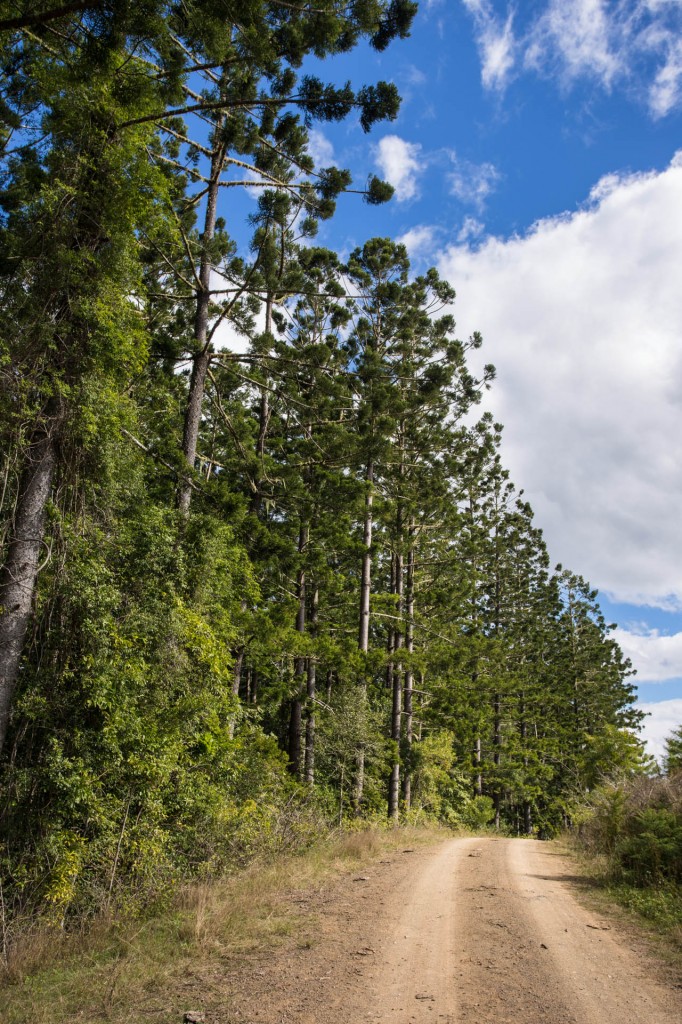
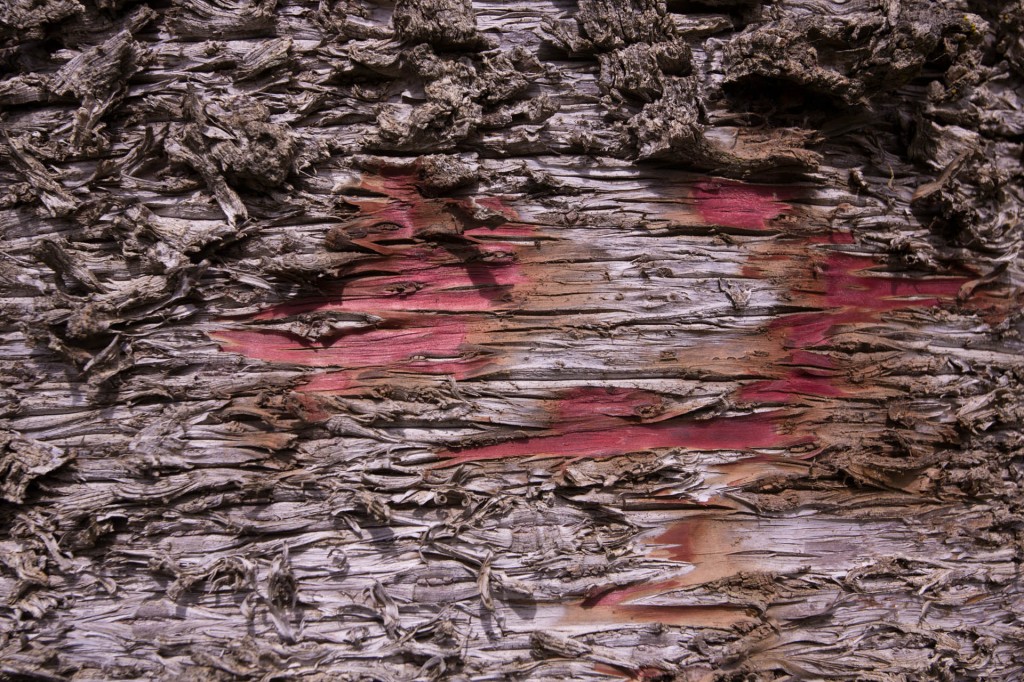
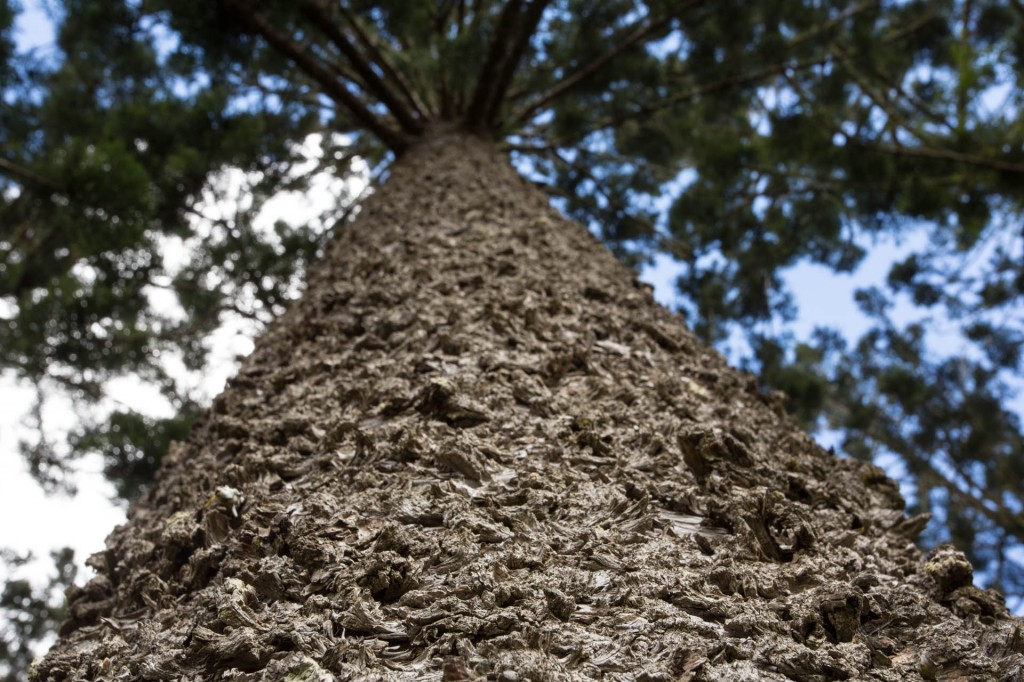
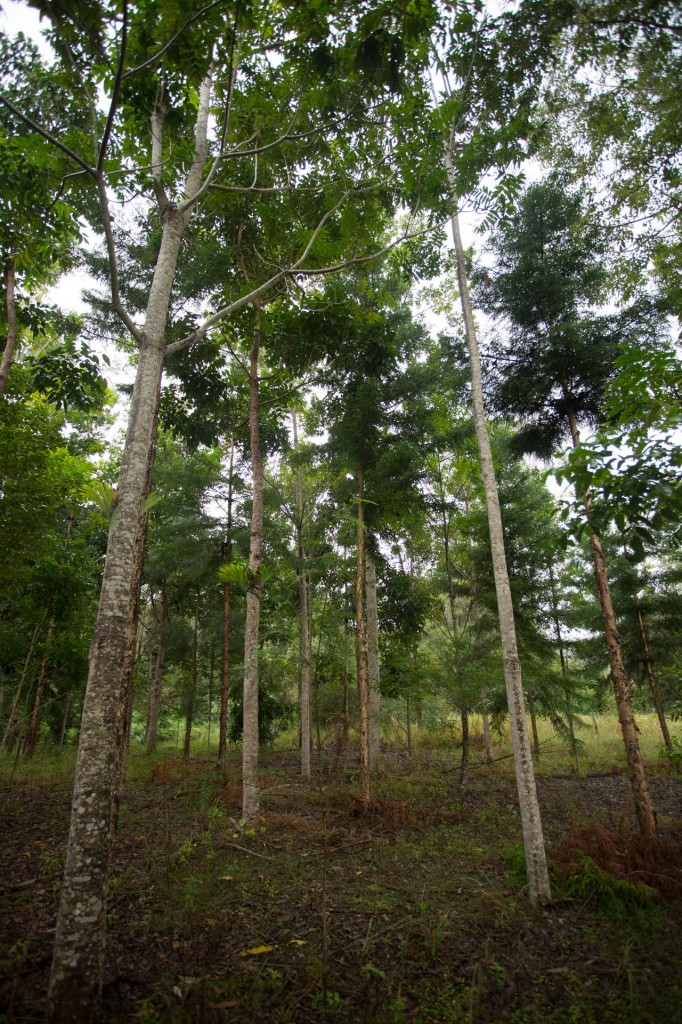
4 Responses to Kandanga to the Great Sandy National Park